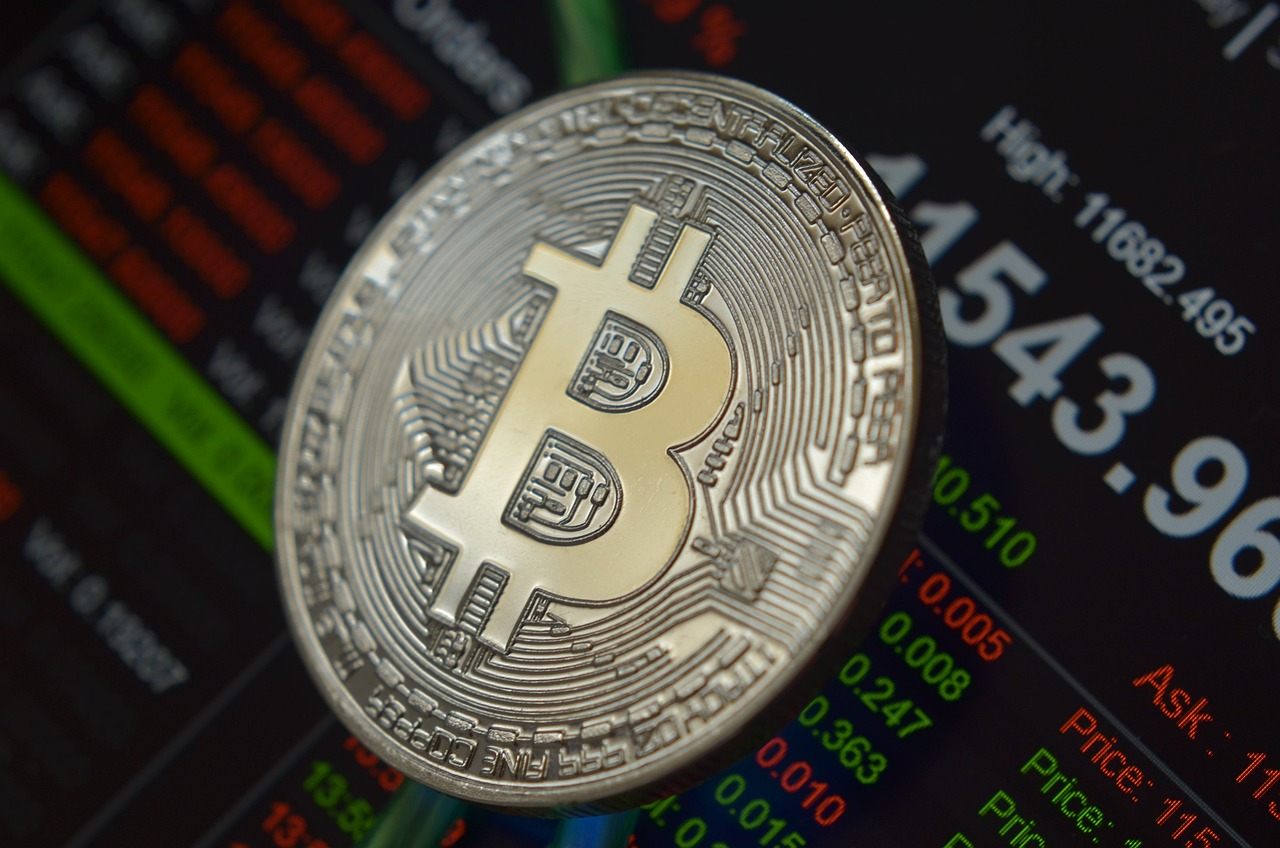The Impact of Economic Policies on Cryptocurrency Markets
In today's rapidly evolving financial landscape, the influence of economic policies on cryptocurrency markets cannot be understated. As digital currencies gain traction, understanding how various policies shape their trajectory is crucial for investors and enthusiasts alike. From regulatory frameworks to monetary policies, these elements create a complex interplay that affects market stability, investor sentiment, and ultimately, the value of cryptocurrencies.
When we talk about economic policies, we're diving into a realm where government decisions and central bank strategies intersect with the world of digital assets. It's like a dance where each step taken by policymakers can lead to a ripple effect in the crypto markets. For instance, a sudden regulatory announcement can send shockwaves through the market, causing prices to soar or plummet within hours. This volatility is a hallmark of the cryptocurrency world, and it underscores the importance of staying informed about economic policies that govern these digital assets.
As we explore the impact of these policies, it's essential to consider the broader implications they have on investor behavior. Economic policies not only shape the regulatory environment but also influence how investors perceive risk and opportunity. In this article, we will delve into the various dimensions of economic policies, examining how they affect cryptocurrency valuations, market volatility, and investor sentiment. By the end, you'll have a clearer understanding of the intricate relationship between economic policies and the ever-evolving cryptocurrency landscape.
So, grab your virtual wallets and get ready to navigate the fascinating intersection of economics and digital currencies. Whether you're a seasoned investor or a curious newcomer, the insights we uncover will equip you with the knowledge you need to navigate this dynamic market.
Regulatory frameworks play a crucial role in shaping cryptocurrency markets. These frameworks can either foster innovation or stifle growth, depending on how they are structured. For instance, countries with clear and supportive regulations tend to attract more investment in cryptocurrencies, while those with stringent rules may drive investors away. This section discusses the impact of different regulations on market stability and investor confidence.
Consider the case of China, which has oscillated between periods of strict regulation and temporary acceptance of cryptocurrencies. Each shift has led to significant fluctuations in the global crypto market. Investors often react to regulatory news with heightened sensitivity, leading to rapid price changes. In contrast, nations that embrace cryptocurrencies, like El Salvador, have seen an influx of interest and investment, showcasing how regulatory clarity can enhance market confidence.
Monetary policies implemented by central banks can significantly affect cryptocurrency valuations. Here, we analyze how interest rates and inflation influence crypto investments. The actions of central banks, such as altering interest rates or implementing quantitative easing, can create an environment where cryptocurrencies are viewed as attractive alternatives to traditional assets.
Interest rates can alter investment strategies dramatically. When central banks raise or lower rates, it sends a clear signal to investors about the economic outlook. This part examines how rising or falling rates impact the demand for cryptocurrencies as alternative assets. For example, when interest rates are low, traditional savings accounts yield minimal returns, prompting investors to seek higher yields in riskier assets like cryptocurrencies.
In the short term, changes in interest rates can lead to immediate reactions in cryptocurrency prices. We explore these rapid shifts and their implications. For instance, a surprise interest rate cut might trigger a surge in crypto investments as investors look for higher returns. Conversely, a rate hike could lead to a sell-off as investors flock back to more stable assets.
Long-term trends in interest rates may reshape the overall cryptocurrency landscape. This section discusses potential future scenarios based on historical data. If interest rates remain low for an extended period, we could see a sustained increase in cryptocurrency adoption as investors seek alternatives to traditional investments.
Inflation concerns drive many investors toward cryptocurrencies as a hedge. We investigate how inflation rates correlate with crypto market performance. As inflation rises, the purchasing power of fiat currencies diminishes, prompting investors to turn to digital currencies that are often perceived as a store of value. This shift can lead to increased demand and higher prices in the crypto market.
Economic policies often lead to increased market volatility. This segment highlights the relationship between policy announcements and price fluctuations in the cryptocurrency market. Investors are constantly on edge, reacting to news from central banks, government regulations, and macroeconomic indicators. Such volatility can create opportunities for savvy traders but can also lead to significant losses for those unprepared for sudden market shifts.
Investor behavior is influenced by economic policies. Here, we delve into how policy changes affect trading patterns and sentiment among crypto investors. For instance, when a country announces a favorable regulatory stance, we often see a surge in buying activity as investors rush to capitalize on the perceived opportunity.
Market sentiment can shift dramatically in response to economic news. This section examines how positive or negative sentiments impact cryptocurrency prices and trading volumes. When investors feel optimistic about the future of cryptocurrencies, prices tend to rise, creating a feedback loop that attracts even more investment. Conversely, negative news can lead to panic selling, driving prices down.
- How do regulatory changes affect cryptocurrency prices?
Regulatory changes can create uncertainty or confidence in the market, leading to price fluctuations. - What role do interest rates play in cryptocurrency investments?
Interest rates influence the attractiveness of cryptocurrencies as alternative investments, especially in low-rate environments. - Can inflation impact cryptocurrency adoption?
Yes, rising inflation often drives investors to seek out cryptocurrencies as a hedge against currency devaluation.

Regulatory Frameworks
Regulatory frameworks play a crucial role in shaping the landscape of cryptocurrency markets. As the world becomes increasingly digital, the need for clear and effective regulations has never been more pressing. Without a solid regulatory foundation, both investors and developers may find themselves navigating a treacherous sea filled with uncertainty and risk. The implications of these regulations can either bolster market confidence or instigate fear, leading to significant fluctuations in cryptocurrency values.
Different countries have adopted various approaches to cryptocurrency regulation, which can greatly impact market stability. For instance, some nations embrace cryptocurrencies, creating a favorable environment for innovation, while others impose strict regulations that can stifle growth. This disparity leads to a patchwork of regulatory environments that can confuse investors and developers alike. To illustrate, consider the following examples:
| Country | Regulatory Approach | Impact on Market |
|---|---|---|
| United States | Mixed regulations with state-level variations | High volatility, but strong investor interest |
| China | Strict bans on trading and ICOs | Significant market pullback and uncertainty |
| Switzerland | Proactive regulations promoting blockchain technology | Increased investment and innovation |
The impact of regulatory frameworks extends to investor confidence as well. When regulations are clear and well-communicated, investors feel more secure in their decisions, leading to increased participation in the market. Conversely, ambiguous or overly restrictive regulations can create fear, causing investors to retreat and resulting in decreased trading volumes. For example:
- Clear Regulations: Foster trust and encourage investment.
- Uncertain Regulations: Lead to market hesitation and volatility.
- Supportive Policies: Can attract international investment and innovation.
In conclusion, the regulatory frameworks governing cryptocurrencies are not just bureaucratic hurdles; they are vital components that influence market dynamics and investor behavior. As the cryptocurrency ecosystem continues to evolve, it is essential for regulators to strike a balance between protecting consumers and fostering innovation. This delicate dance will ultimately determine the future trajectory of cryptocurrency markets and their integration into the broader financial landscape.

Monetary Policies
Monetary policies are the backbone of any economy, acting like the steering wheel of a car, guiding it through the twists and turns of financial landscapes. When central banks adjust their policies, they don't just impact traditional markets; they also send ripples through the ever-evolving world of cryptocurrencies. These digital assets, often seen as a hedge against traditional financial systems, react dynamically to changes in interest rates and inflation. Understanding this relationship is crucial for both seasoned investors and newcomers alike.
Let's dive deeper into how these monetary policies manifest in the cryptocurrency market. When central banks decide to lower interest rates, they essentially make borrowing cheaper. This can lead to an influx of capital into various asset classes, including cryptocurrencies. Investors might perceive lower rates as a signal to seek higher returns elsewhere, prompting them to explore digital currencies. Conversely, when interest rates rise, the cost of borrowing increases, which can dampen investment enthusiasm. Suddenly, the allure of cryptocurrencies may diminish as investors opt for safer, interest-bearing assets.
Interest rates are a critical component of monetary policy that can significantly influence investor behavior in the cryptocurrency space. When rates are low, the potential for higher returns from cryptocurrencies can be very tempting. Think of it like a sale at your favorite store; when prices drop, everyone rushes in to grab the best deals. Similarly, when interest rates fall, investors flock to cryptocurrencies in search of better returns. However, when rates rise, the opposite can occur, leading to a more cautious investment approach.
In the short term, changes in interest rates can lead to immediate reactions in cryptocurrency prices. For instance, if a central bank announces a surprise rate cut, you might see a sudden spike in Bitcoin or Ethereum prices as traders scramble to capitalize on the perceived opportunity. This swift reaction can create a rollercoaster effect, with prices soaring and plummeting almost overnight. The excitement and fear that accompany these rapid shifts can lead to increased trading volumes, as investors try to ride the wave of volatility.
Looking at long-term trends, the impact of interest rates on the cryptocurrency market can be quite profound. Over time, consistent patterns may emerge, shaping the overall landscape of digital currencies. For instance, if a central bank maintains a low-interest-rate environment for an extended period, we could see a sustained increase in cryptocurrency adoption as more people look to diversify their portfolios. Historical data suggests that prolonged low rates can lead to significant price appreciation in cryptocurrencies, as they become more attractive compared to traditional investments.
Inflation is another critical factor that drives many investors toward cryptocurrencies. As the cost of living rises, the purchasing power of fiat currencies diminishes. This scenario often leads individuals to seek refuge in digital assets, viewing them as a hedge against inflation. The relationship between inflation rates and cryptocurrency performance is fascinating. When inflation rises, cryptocurrencies often see an uptick in demand as investors look to protect their wealth. This correlation highlights the unique position cryptocurrencies hold in the financial ecosystem, especially during times of economic uncertainty.
In conclusion, monetary policies wield significant influence over the cryptocurrency markets. By understanding how interest rates and inflation impact investor behavior, you can better navigate the complexities of this exciting financial frontier. As central banks continue to adjust their policies, staying informed will be key to leveraging potential opportunities in the world of digital currencies.

Interest Rates
Interest rates are more than just numbers; they are the pulse of the economy and can significantly influence how investors approach their portfolios, especially when it comes to the world of cryptocurrencies. When central banks adjust interest rates, they are not just tweaking a dial; they are sending ripples through the financial markets that can lead to profound changes in investor behavior. For instance, when interest rates rise, traditional savings accounts and bonds become more attractive due to higher returns, which might lead investors to pull their funds from riskier assets like cryptocurrencies. Conversely, when rates are low, the appeal of cryptocurrencies as alternative investments can increase, as investors search for higher returns in a low-yield environment.
To illustrate this dynamic, consider the following scenarios:
- Rising Interest Rates: When interest rates increase, borrowing costs go up, which can dampen consumer spending and business investments. This often leads to a bearish sentiment in the cryptocurrency market as investors may seek safer, more stable investments.
- Falling Interest Rates: On the flip side, when rates decrease, the cost of borrowing becomes cheaper, encouraging spending and investment. This can lead to bullish trends in the cryptocurrency market, as more investors may flock to digital assets in search of higher returns.
But how do these interest rate shifts manifest in the cryptocurrency market? The short-term effects can be quite dramatic. For instance, a sudden announcement from a central bank regarding interest rate hikes can lead to immediate sell-offs in cryptocurrencies, as traders react quickly to the news. This volatility can create an unpredictable environment for both seasoned investors and newcomers. In contrast, long-term trends in interest rates can reshape the entire landscape of cryptocurrency investment. If we look at historical data, periods of sustained low interest rates have often coincided with bull markets in cryptocurrencies, as investors look for alternative stores of value in times of economic uncertainty.
In summary, understanding the relationship between interest rates and cryptocurrency investments is crucial for anyone looking to navigate this vibrant market. As we continue to witness economic shifts globally, keeping an eye on interest rate changes can provide valuable insights into potential market movements and investment strategies.

Short-term Effects
When central banks adjust interest rates, the ripple effects can be felt almost immediately across various financial markets, including the ever-volatile cryptocurrency sector. Imagine a pebble dropped in a pond; the initial splash creates waves that travel outward, affecting everything in their path. In the short term, a rise in interest rates can lead to a swift reaction in cryptocurrency prices, often resulting in a downward trend as investors shift their focus to more traditional, interest-bearing assets. This is because higher rates can make holding cash more appealing compared to holding cryptocurrencies, which do not yield interest.
Conversely, when interest rates are lowered, it can create an environment ripe for investment in riskier assets, including cryptocurrencies. Investors may feel emboldened to dive into the crypto market, hoping to capitalize on potential gains that outweigh the diminished returns from traditional savings. This can lead to a sudden surge in demand, pushing prices upward. However, the volatility of cryptocurrencies means that these price movements can be exaggerated, resulting in rapid fluctuations that can leave investors feeling dizzy.
To illustrate this, let’s take a look at a simplified table showcasing hypothetical scenarios of interest rate changes and their immediate impacts on cryptocurrency prices:
| Interest Rate Change | Investor Reaction | Impact on Cryptocurrency Prices |
|---|---|---|
| Increase by 0.5% | Shift to safer assets | Price Drop |
| Decrease by 0.5% | Increased investment in crypto | Price Surge |
| No Change | Market Stabilization | Minimal Movement |
These short-term effects can create a whirlwind of activity in the crypto markets, leading to both opportunities and risks for investors. It’s essential for those involved in cryptocurrency trading to stay informed about monetary policy announcements and to be prepared for the potential volatility that may follow. Understanding these dynamics can help investors make more informed decisions and navigate the choppy waters of the cryptocurrency market with greater confidence.
- How do interest rate changes affect cryptocurrency prices? Interest rate changes can lead to immediate reactions in cryptocurrency prices, with increases often causing prices to drop as investors seek safer assets.
- What should investors consider during interest rate fluctuations? Investors should monitor economic news and market sentiment, as these factors can significantly influence trading patterns and price movements in the crypto space.
- Are cryptocurrencies a good hedge against inflation? Many investors view cryptocurrencies as a hedge against inflation, particularly when traditional currencies lose value due to rising inflation rates.

Long-term Trends
When we talk about the in interest rates and their impact on the cryptocurrency landscape, we're diving into a fascinating realm of economic prediction and market behavior. Over the years, the relationship between traditional financial systems and cryptocurrencies has evolved dramatically. As central banks adjust their interest rates, we often see a ripple effect that can reshape the entire crypto market. But what does this really mean for investors and enthusiasts alike?
One of the key factors to consider is how historical data can guide our understanding of future trends. For instance, during periods of low-interest rates, we often observe a surge in cryptocurrency investments. Investors, seeking higher returns than what traditional savings accounts can offer, are drawn to the potential of digital currencies. This phenomenon can be likened to a floodgate opening—when the interest rates drop, capital flows into the crypto market, pushing prices upward.
Conversely, when interest rates rise, the narrative shifts. Investors tend to gravitate back towards traditional assets, which may offer more stability and predictability in their returns. This pattern can create a volatile environment for cryptocurrencies, as demand fluctuates based on economic conditions. To illustrate this, let’s consider the following table that outlines the historical interest rate changes and corresponding movements in cryptocurrency valuations:
| Year | Interest Rate Change (%) | Bitcoin Price Movement (%) |
|---|---|---|
| 2015 | -0.25 | +35 |
| 2016 | -0.50 | +50 |
| 2018 | +0.25 | -20 |
| 2020 | -0.75 | +300 |
This table clearly shows that as interest rates decrease, there tends to be a corresponding increase in Bitcoin's price. However, it’s essential to note that correlation does not imply causation. Other factors, such as investor sentiment, regulatory news, and technological advancements, also play significant roles in shaping market dynamics.
Looking ahead, the future of cryptocurrency in relation to long-term interest rates is both exciting and uncertain. If central banks continue to adopt low-interest-rate policies, we might see a sustained interest in cryptocurrencies as alternative investments. However, should inflation rates rise significantly, leading to tighter monetary policies, the crypto market could face challenges. The key takeaway is that staying informed about economic trends and understanding their implications can empower investors to navigate this ever-evolving landscape.
In conclusion, the long-term trends of interest rates are a critical component of the cryptocurrency market. As we continue to analyze these patterns, we can better prepare for the potential shifts that may lie ahead. Are you ready to ride the wave of change in the crypto world?
- How do interest rates affect cryptocurrency prices? Interest rates can influence investor behavior, leading to increased or decreased demand for cryptocurrencies based on the attractiveness of traditional investments.
- What should investors watch for regarding economic policies? Investors should pay attention to central bank announcements, inflation rates, and overall market sentiment to gauge potential impacts on the cryptocurrency market.
- Are cryptocurrencies a good hedge against inflation? Many investors view cryptocurrencies as a viable hedge against inflation, especially during periods of economic uncertainty.

Inflation Concerns
Inflation is a term that sends shivers down the spines of investors, and for good reason. It represents the erosion of purchasing power, making every dollar worth a little less over time. As prices rise, the value of traditional currencies can dwindle, leading many to seek refuge in alternative investments. This is where cryptocurrencies come into play, often seen as a hedge against inflation. But how exactly does inflation influence the cryptocurrency market?
When inflation rates soar, the appeal of cryptocurrencies like Bitcoin and Ethereum increases. Investors begin to view these digital assets as a store of value, much like gold. The idea is simple: if the dollar is losing value, why not invest in something that could potentially appreciate? This shift in perception can lead to an influx of capital into the crypto markets, driving prices up. For instance, during periods of high inflation, we often see a surge in trading volumes as more people rush to buy these digital currencies.
However, the relationship between inflation and cryptocurrency prices isn't always straightforward. While many investors flock to crypto during inflationary periods, the volatility of these assets can lead to unpredictable outcomes. For example, a sudden spike in inflation might initially boost demand for cryptocurrencies, but if the market reacts negatively to other economic factors, prices can plummet just as quickly. This duality creates a fascinating dynamic that keeps investors on their toes.
To illustrate the correlation between inflation rates and cryptocurrency performance, let’s take a look at some historical data:
| Year | Inflation Rate (%) | Bitcoin Price (USD) |
|---|---|---|
| 2017 | 2.1 | 1,000 |
| 2020 | 1.2 | 29,000 |
| 2021 | 5.4 | 64,000 |
| 2022 | 8.0 | 19,000 |
This table highlights a notable trend: as inflation rates increased, particularly in 2021, Bitcoin's price surged to an all-time high. Conversely, in 2022, despite high inflation, Bitcoin's price saw significant volatility, showcasing the complex interplay between these economic factors.
Ultimately, the impact of inflation on cryptocurrency markets is a double-edged sword. While high inflation can drive demand for cryptocurrencies, the inherent volatility and speculative nature of these assets mean that investors must tread carefully. Understanding the nuances of this relationship is crucial for anyone looking to navigate the choppy waters of crypto investing.
- What is inflation? Inflation is the rate at which the general level of prices for goods and services rises, eroding purchasing power.
- How does inflation affect cryptocurrency prices? High inflation can lead investors to seek cryptocurrencies as a hedge, potentially increasing demand and prices.
- Are cryptocurrencies a safe investment during inflationary periods? While they may offer a hedge, cryptocurrencies are also highly volatile and can experience significant price fluctuations.
- What other factors influence cryptocurrency prices? Besides inflation, factors such as regulatory news, market sentiment, and technological advancements also play crucial roles.

Market Volatility
Market volatility is a term that sends shivers down the spine of many investors, especially in the realm of cryptocurrencies. But what does it really mean? In simple terms, market volatility refers to the degree of variation in trading prices over time. Think of it like the wild ride of a roller coaster—sometimes you're soaring high, and other times you're plummeting down. This unpredictability is often fueled by economic policies that can trigger rapid price fluctuations, leaving investors scrambling to make sense of it all.
One of the primary drivers of volatility in the cryptocurrency market is the reaction to economic policy announcements. For instance, when a central bank hints at changing interest rates or adjusting monetary policy, the crypto market can react almost instantaneously. This reaction is often exaggerated due to the relatively low market capitalization of cryptocurrencies compared to traditional assets. As a result, even minor news can lead to significant price swings. Investors must remain vigilant, as the news cycle can turn their fortunes upside down in the blink of an eye.
Moreover, the cryptocurrency market is often seen as a barometer of investor sentiment. When economic news is perceived as negative, such as reports of rising inflation or unemployment, investors may flock to cryptocurrencies as a safe haven, driving prices up. Conversely, positive economic news can lead to a sell-off as investors take profits, increasing market volatility. It's a delicate dance, and understanding this relationship is crucial for anyone looking to navigate the crypto landscape.
To illustrate this dynamic, consider the following table that summarizes how various economic events can impact cryptocurrency prices:
| Economic Event | Expected Impact on Crypto Prices |
|---|---|
| Interest Rate Hike | Potential decrease in demand for cryptocurrencies as traditional savings become more attractive. |
| Inflation Reports | Increased interest in cryptocurrencies as a hedge against inflation. |
| Regulatory Announcements | Immediate price fluctuations based on perceived regulatory impact. |
| Economic Growth Reports | Positive sentiment may lead to increased investment in cryptocurrencies. |
As you can see, the interplay between economic policies and cryptocurrency prices is complex. Investors often find themselves in a tug-of-war between fear and greed, and understanding how market volatility works can be the key to making informed decisions. It's essential to keep an eye on the broader economic landscape while also paying attention to the unique factors that drive the crypto market.
In conclusion, market volatility in the cryptocurrency arena is not just a byproduct of speculation; it's intricately linked to economic policies and investor behavior. By staying informed and adapting strategies accordingly, investors can better navigate this unpredictable environment. Remember, when it comes to cryptocurrencies, being prepared for the unexpected is not just wise—it's essential.
- What causes cryptocurrency market volatility? Market volatility is primarily caused by economic policy announcements, investor sentiment, and external market factors.
- How can I protect my investments from volatility? Diversifying your portfolio and staying informed about economic trends can help mitigate risks associated with market volatility.
- Is volatility in cryptocurrencies a bad thing? While high volatility can lead to significant losses, it also presents opportunities for substantial gains. Understanding the risks is key.

Investor Behavior
Investor behavior in the cryptocurrency market is a fascinating subject that intertwines psychology, economic policies, and market dynamics. When economic policies shift—be it through regulatory changes, monetary adjustments, or fiscal stimulus—the reactions of investors can be both immediate and complex. Have you ever noticed how a mere tweet from a financial authority can send the price of Bitcoin soaring or plummeting? This phenomenon is not just about numbers; it’s about the human element behind those numbers.
One of the most significant influences on investor behavior is the perception of risk. Economic policies that signal instability, such as unexpected interest rate hikes or regulatory crackdowns, can trigger a wave of panic selling. Conversely, when central banks announce measures to stimulate the economy, like lowering interest rates, it often leads to a surge in investment as people seek alternative assets to protect their wealth. This creates a feedback loop where investor sentiment drives market movements, which in turn influences future investor decisions.
Moreover, the cryptocurrency market is particularly susceptible to the herd mentality. When investors see others buying into a particular cryptocurrency, they often follow suit, driven by fear of missing out (FOMO). This is especially true during bullish trends, where the excitement can lead to inflated prices that don't necessarily reflect the underlying value of the assets. On the flip side, during bearish trends, the same herd mentality can lead to mass sell-offs, exacerbating price declines. In a market as volatile as cryptocurrency, understanding these psychological triggers is vital for any investor.
Another aspect to consider is the impact of information dissemination. In today's digital age, news travels fast, and social media platforms play a significant role in shaping investor sentiment. For instance, a negative report about regulatory crackdowns can lead to a sharp decline in prices, as investors rush to sell their holdings. Conversely, positive news, such as endorsements from influential figures or favorable regulatory developments, can cause prices to skyrocket. The speed at which information spreads means that investors must be vigilant and responsive, often leading to impulsive trading decisions.
In essence, investor behavior is a dynamic interplay between economic policies, psychological factors, and market conditions. Understanding these elements can help investors navigate the often-turbulent waters of the cryptocurrency market. As we move forward, it will be crucial for investors to stay informed and adaptable, recognizing that their decisions are not made in a vacuum but are influenced by a myriad of factors.
- What factors influence investor behavior in cryptocurrency?
Investor behavior is influenced by economic policies, market sentiment, regulatory news, and psychological factors such as fear and greed.
- How do economic policies affect cryptocurrency prices?
Economic policies can lead to changes in market sentiment, which directly impacts cryptocurrency prices. For example, interest rate changes can alter investment strategies and risk perceptions.
- Why is market sentiment important in cryptocurrency trading?
Market sentiment reflects the overall attitude of investors towards a particular cryptocurrency, influencing buying and selling decisions, which can lead to significant price fluctuations.

Market Sentiment
Market sentiment is like the weather in the crypto world; it can change from sunny to stormy in a heartbeat. When we talk about market sentiment, we're referring to the overall attitude of investors towards a particular asset or market. In the case of cryptocurrencies, this sentiment is often shaped by a multitude of factors, including economic news, regulatory changes, and technological advancements. Imagine you're at a concert; if the crowd is pumped up, the energy is electric, and everyone is dancing. Conversely, if the crowd is anxious or bored, the vibe can quickly turn sour. This analogy perfectly encapsulates how sentiment can influence cryptocurrency prices.
One of the most fascinating aspects of cryptocurrency is how sensitive it is to news and events. For instance, a positive announcement regarding regulatory acceptance can send prices soaring, while negative news can trigger a rapid sell-off. A recent example is the announcement of new regulations in a major economy, which caused a wave of optimism among investors. As a result, Bitcoin and other altcoins experienced a significant uptick in value. Conversely, when news of potential bans or strict regulations emerges, the market can react negatively, leading to sharp declines in prices.
Additionally, social media plays a pivotal role in shaping market sentiment. Platforms like Twitter and Reddit have become hotbeds for discussions and speculation about cryptocurrencies. A single tweet from a high-profile figure can ignite a frenzy, causing prices to skyrocket or plummet. This phenomenon highlights the importance of sentiment analysis in understanding market dynamics. Investors are not just reacting to the fundamentals of a cryptocurrency; they are also influenced by the prevailing mood in the market.
To illustrate the impact of market sentiment on cryptocurrency prices, consider the following table that outlines key events and their corresponding price movements:
| Event | Date | Price Movement |
|---|---|---|
| Positive Regulation Announcement | March 2023 | +25% |
| Major Exchange Hack | June 2023 | -30% |
| Elon Musk Tweet | August 2023 | +15% |
| Central Bank Digital Currency Launch | September 2023 | -20% |
This table clearly demonstrates how swiftly market sentiment can shift and the direct impact it has on cryptocurrency valuations. It's essential for investors to stay informed about both market trends and sentiment indicators. By doing so, they can better navigate the unpredictable waters of the cryptocurrency market.
In conclusion, understanding market sentiment is crucial for anyone looking to invest in cryptocurrencies. The emotional and psychological factors at play can often outweigh traditional financial metrics. As the crypto market continues to evolve, keeping a pulse on sentiment will be key to making informed investment decisions.
- What is market sentiment in cryptocurrency? Market sentiment refers to the overall attitude and emotions of investors towards cryptocurrencies, which can significantly influence price movements.
- How does news affect market sentiment? News about regulations, technological advancements, or significant events can quickly shift market sentiment, leading to price fluctuations.
- Why is social media important for cryptocurrency sentiment? Social media platforms are influential in shaping opinions and discussions about cryptocurrencies, often leading to rapid changes in market sentiment.
- Can market sentiment be measured? Yes, various tools and indicators, such as sentiment analysis tools and social media monitoring, can help gauge market sentiment.
Frequently Asked Questions
- How do regulatory frameworks affect cryptocurrency markets?
Regulatory frameworks are like the rules of the game in the cryptocurrency world. They can either build trust or create fear among investors. When regulations are clear and supportive, it boosts investor confidence, leading to a more stable market. Conversely, overly strict regulations can cause panic and volatility, making investors wary.
- What role do monetary policies play in cryptocurrency valuations?
Monetary policies, especially those related to interest rates and inflation, are crucial in determining how cryptocurrencies are valued. For instance, when interest rates rise, traditional investments might seem more appealing, leading to a decrease in demand for cryptocurrencies. On the flip side, low interest rates can push investors towards crypto as they seek better returns.
- How do interest rates impact cryptocurrency demand?
Interest rates can be a game changer for crypto demand. When rates are low, borrowing is cheaper, and more people might invest in cryptocurrencies. But when rates go up, investors might move their money to safer, interest-bearing assets. It's like choosing between a thrilling roller coaster and a calm carousel – both have their appeal, but circumstances can sway your choice!
- What are the short-term effects of interest rate changes on cryptocurrencies?
Short-term effects can be quite dramatic! A sudden increase in interest rates can lead to immediate price drops in cryptocurrencies as investors react swiftly, often selling off their assets. It's a bit like a knee-jerk reaction – you touch something hot, and you pull your hand away instantly!
- How does inflation influence crypto investments?
Inflation can be a double-edged sword for investors. When inflation rates rise, many people flock to cryptocurrencies as a hedge against the decreasing value of fiat currencies. They see crypto as a safe haven, much like how people seek shelter during a storm. This increased demand can drive prices up, creating a ripple effect in the market.
- What is the relationship between economic policies and market volatility?
Economic policies can stir the pot in the cryptocurrency market, leading to increased volatility. When new policies are announced, they can cause rapid price fluctuations as investors react to the news. It's like a sudden gust of wind that can sway a ship at sea – it can either stabilize or toss it around unpredictably!
- How does investor behavior change with economic policy shifts?
Investor behavior is highly sensitive to economic policy changes. When policies are favorable, investors might dive headfirst into crypto, riding the wave of optimism. However, if policies seem restrictive or uncertain, they may pull back, causing a rush to sell. It’s a classic case of herd mentality – when one goes, many follow!
- What impact does market sentiment have on cryptocurrency prices?
Market sentiment can swing like a pendulum based on economic news. Positive news can create a bullish atmosphere, leading to price surges, while negative news can lead to panic selling. Think of it as a crowd at a concert – if the energy is high, everyone is dancing; but if someone yells 'fire!', chaos ensues!



















